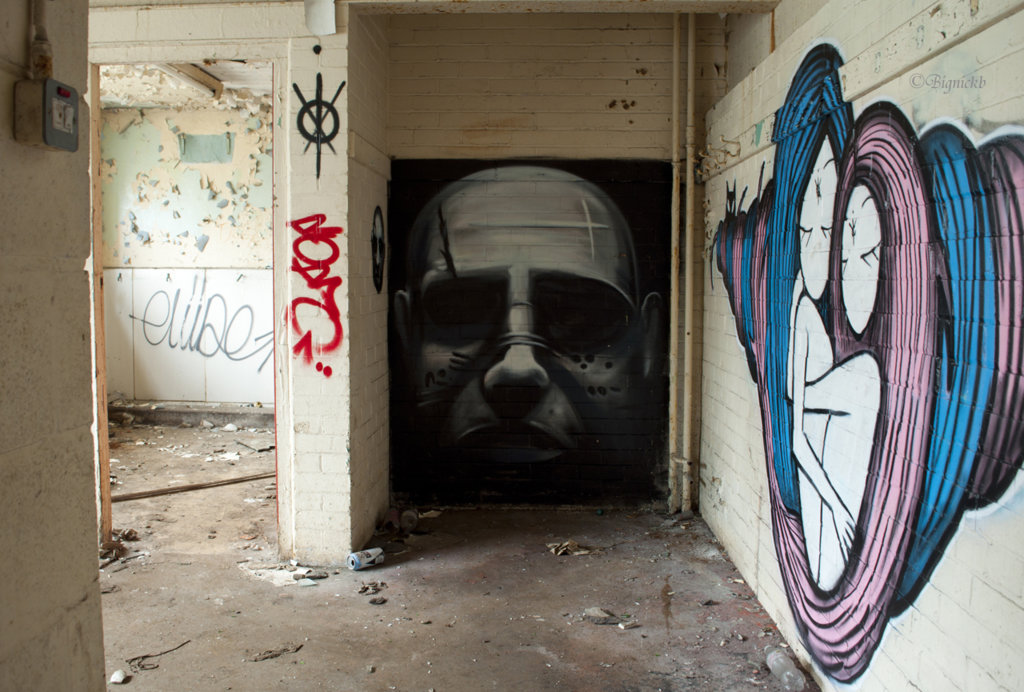Underneath Sheffield city centre, around Exchange Street, three rivers converge on a cathedral-like storm drain. Built in the mid-1800s, the “Megatron” is the climax of a network of Victorian tunnels sprawling below the city.
Sheffield is a hotspot for abandoned spaces, having seen rapid cultural and economic change over the last two centuries. Besides their frequency, their proximity to the city centre distinguishes the Steel City from other former-industrial towns.
Urban exploration, the practice of vising sites off-limits to the general public, experienced a new wave of popularity in the mid-2010s, in part due to social media. It can be extremely dangerous – abandoned buildings are rarely safe – and trespass is a civil offence in England and Wales. Just last year, trespassers were caught in the Old Town Hall. South Yorkshire Police also warn: “Clearly this goes against government Covid-19 advice at the moment.”

The Megatron. Image credit: tarkovsky, via 28dayslater.
“With greater public interest comes increased scrutiny from the authorities,” said James*, a 23-year-old urban explorer.
“But the appeal comes from a veneration of history. Architecture is a very visual reminder of our culture, our history and how our society advances.”
Many buildings face plans for redevelopment. However, most have been delayed as the UK experiences a recession the likes of which has not been seen since the 1700s. Covid-economics is characterised by uncertainty, but in these forgotten spaces, abandoned during their own periods of boom and bust, lie clues to the city’s future.
Sheffield Old Town Hall

The law courts, in Sheffield Old Town Hall. Image credit: anonymous.
The Old Town Hall was built on Castle Street in 1808. The neoclassical building was the third of its name, however the city quickly outgrew it after the first industrial revolution. It was then used to house the Crown and High Courts after the current Sheffield Town Hall opened in the 1890s, but 100 years later these too had moved to larger sites. A Grade II listed building, it has been unused since 1995. In 2019, Sheffield City Council announced a planning application by Aestrom Ltd had been approved: the Old Town Hall will be turned into serviced apartments as part of the renovation of the Castlegate area, which also includes excavating the Megatron and rebuilding the entrance to Sheffield Castle.
Campaign group Friends Of Sheffield Old Town Hall said: “While we are pleased that the Old Town Hall is at last to be restored, we are disappointed that the Council failed to to take steps to ensure that at least part of the building retains its historic significance.”

Cells underneath the Old Town Hall. Image credit: anonymous.
Like the Megatron, the Old Town Hall was left behind because of economic booms. The city outgrew it once, triggering a change in use, only for the same to happen a century later.
“Sheffield is experiencing a development boom, with lots of growth in the city centre for the commercial and academic industries,” said James.*
“I think it is important to retain the look and feel of an area if possible, even if it is just the facade of a building. Otherwise, the new development risks being bland in its modernity, until it too is denigrated and disposed of in the face of progress.
“Abandoned spaces inherently represent a failure. Removing them can represent a clean slate for an area, but also white-washes its history.”
Record Ridgeway Tools Ltd.

Record and Ridgeway Tools Ltd. Image credit: Bignickb, via 28dayslater.
What distinguishes Record Ridgeway from other abandoned workplaces is its abundance of colourful graffiti, including a mural from local artist Phlegm.
“To be honest there isn’t much evidence of the old tool making business left, it’s more of an art gallery now which is absolutely fine by me,” wrote one user on 28dayslater, a forum for urban explorers.
The Shepherd Street factory was built in the 1930s. U.S. based Irwin Tools acquired the company in 1998 and have since outsourced to China. Scheduled for demolition for several years, work has not yet been started.

Record Ridgeway Tools Ltd. Image credit: Bignickb, via 28dayslater.
Record Ridgeway is a reminder of what happens when economic activity moves away from an area, as is being caused today by home-working. Dr Jesse Matheson, senior lecturer in economics at the University of Sheffield, calls this effect the “zoomshock”.
“Once lockdown restrictions are lifted, we are likely to see people working from home at substantially higher rates than we observed before the pandemic,” he said.
“Fewer workers in these areas means fewer local services will be needed (relative to pre-pandemic). We should expect to see an increase in empty shops and abandoned buildings as some local service businesses move to the residential neighbourhoods.”

Zoomshock for Sheffield. Red areas indicate a decline in the number or workers due to working from home, blue areas indicate an increase in the number or workers due to working from home.
Sheffield Ski Village

Sheffield Ski Village. Image credit: anonymous.
Opened in 1988, Sheffield ski village closed after a fire in 2012. By 2016 it had suffered 50 arson attacks. In its day it was the largest artificial resort in Europe, but now little remains except rubble. Its Parkwood Springs site is still visible, snaking across the hills to the north-west.
“I used to go there loads as a kid,” said Lucy*, another urban explorer.
“It’s very cool. But it still feels sad going back now. I’d love for it to be used again.”
Sheffield City Council loaned £4.8m to developers Extreme to rebuild the site in 2019, on top of their £25m proposal. Extreme have suffered pandemic-related setbacks, but insisted they were “sticking with it 100 per cent,” according to reporting by the Sheffield Star. Its location also suggests it could benefit from a positive zoomshock in the coming years.
Dr Matheson said: “because remote-office workers will be spending time in these neighbourhoods, more local services will be needed. These local services will be able to make use of currently underutilised spaces.”
The original resort was home to bars, bowling alleys and a quad biking track. Olympic athletes like Ellie Koyander were also trained there. If this social element can be recreated, it may be attractive to consumers deprived of their social lives by lockdown, while retaining the historical significance currently turning the heads of UK urban explorers.

View of Sheffield ski village from Walkley. Image credit: Charlie Ridler.
*Some names in this story have been changed.




